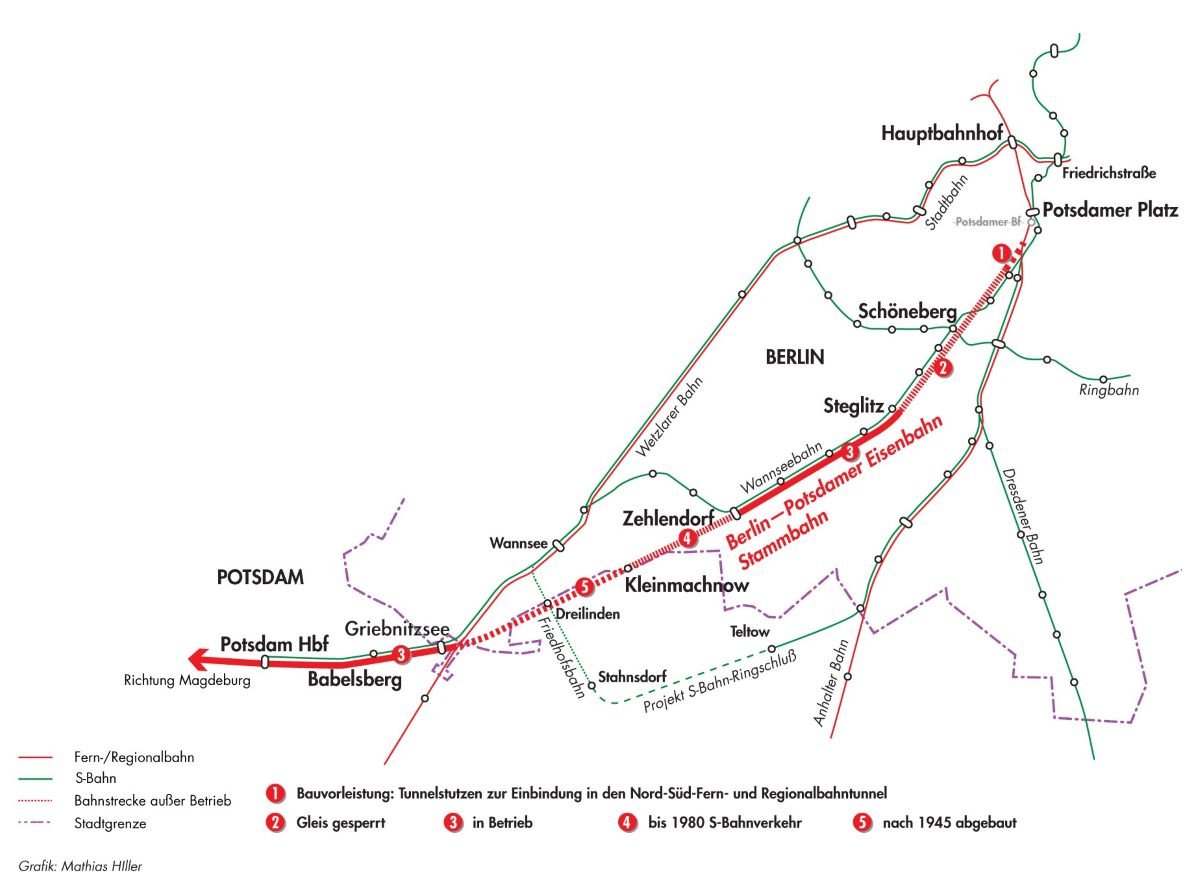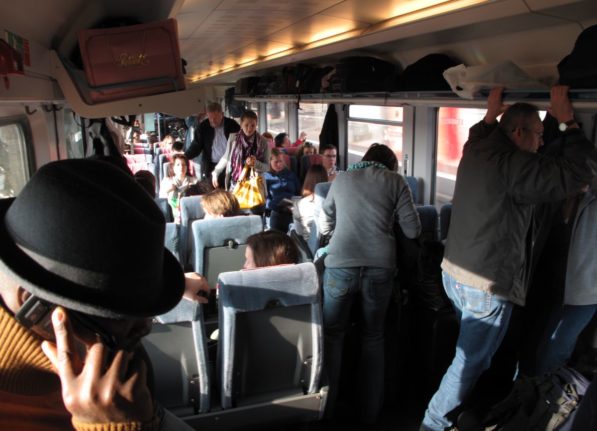Berlin-Brandenburg’s transportation authority (VBB) is pushing to extend train lines and add connections between the capital city and surrounding regions.
One related project involves bringing an old, now defunct, train line back to life and adding seven train stations, along with new, faster transit connections.
Interestingly, the line in question was the first to be built in the region. The derelict “trunk line” is to be put back into operation 200 years after its completion, the VBB says.
History of the ‘trunk line’
In 1838 a main railway line was built from Potsdam to Berlin. It was Germany’s second completed railway line and the first in Prussia.
Stations in Steglitz and Schöneberg were added and it was extended to Magdeburg by 1846. Later it was connected to other lines, becoming the main “trunk” of the Prussian railway network. It is often called the Stammbahn (or trunk line) in German today.
As S-Bahn traffic increased, additional parallel tracks were added. By 1933 the tracks between Zehlendorf and Potsdamer Bahnhof in Berlin were electrified.
Then, during World War II, destruction of the bridge over the Teltow Canal in 1945, disrupted operations on the main line. Following the war, the division of Berlin and the construction of the Berlin Wall made reconstruction of the main line unfeasible.
In 1980, the last stretch of the main line that was still in use for passenger traffic was shut down.
Why bring back an old train line?
Residents of suburban southwest Berlin, Kleinmachnow and Potsdam would be better served if the old line was restored, and increasingly transportation and city planners see value in doing so.
The citizens’ initiative Stammbahn was founded in 1999 to emphasise the demand for a better rail infrastructure in the southwest of Berlin and Brandenburg, with the common goal of reopening the Berlin-Potsdam trunk line.
They suggest that Berlin’s southwestern regions are underserved by the city’s otherwise well-connected transportation network, and that road and rail congestion on the current routes is already high.
According to the citizens’ initiative, the Stammbahn could cut passenger travel times in half — particularly from Zehlendorf to Berlin Hauptbahnhof, or from Kleinmachnow to Potsdamer Platz.
For years, various plans around the trunk line were drawn up and then thrown out. But in 2022, Deutsche Bahn finally pitched an idea that stuck. Now concrete plans are coming together – the traditional trunk line is to be integrated into the regional train network.
READ ALSO: Germany’s longest regional train journeys with the €49 ticket
Which new stations and lines will be added?
According to Berliner Zeitung, the trunk line restoration will include the construction of several new train stations in Berlin’s southwest. New stations have the working titles Dreilinden, Europarc, and Düppel-Kleinmachnow.
Additional regional train (RE) stations will also be added to existing S-bahn stations where the line will connect, such as at Zehlendorf, Rathaus Steglitz and Schöneberg stations. From there, the main line would connect to Berlin’s Ringbahn lines, and an additional regional line platform may be added at either Hermannstraße or Neukölln stations.

Even for Berliners living beyond the direct reach of the Stammbahn, transfer connections added by the line will result in faster journeys across the capital city.
Following the completion of the project, passengers can expect to travel more quickly between Potsdam and Zehlendorf or Zehlendorf to the main station; also from Steglitz to Ostkreuz, or from Schöneberg to Bad Belzig or Golm.
When will the restored trunk line be functional?
Berlin-Brandenburg’s transportation authority (VBB) has confirmed its plans to put the Stammbahn line back into operation 200 years after its completion – aiming to begin operations by 2038.
READ ALSO: German government expects more punctual trains ‘by Christmas’
According a VBB press release from last year, the project has already secured funding through i2030, which is an investment program to expand rail connections between Berlin and the surrounding regions.
“The financing is in place, the preliminary planning should be available in 2026,” the citizens’ initiative Stammbahn told Berliner Zeitung.
For now, the tracks along the old trunk line are covered in rust with trees sprouting up between rotting wooden sleepers. In a few years time, it may be transformed into a long construction site.



 Please whitelist us to continue reading.
Please whitelist us to continue reading.
Member comments